Liquidity Network: offering users fast, scalable and secure exchange and payment services
This is an article on Liquidity Network . A new platform for faster , secure and scalable exchange services.
Introduction
Since the beginning of centralized banking in Mesopotamia, finance intermediaries evolved as middlemen between, e.g. parties that have surplus capital and others that desire access to liquid funds. Such finance intermediaries traditionally act as custodians, i.e., they (temporarily) own the transmitted funds, and therefore are entrusted with correct monetary policy.
Centralised systems are systems that have all their data, funds and transactions all enter into and leave through a single point(central hub).
Centralized exchange ideally, is run by a profit oriented company that generate revenue from the platform. The details of the account such as keys and other valuable items are held by the exchange. This can raise some issue of trust and security.
These systems in a bid to probably cut down operation cost do not employ the right security measures to keep the users' fund secure. A single attack or breach , and all the funds may be lost.
If the hub is damaged, then the user will not be able to perform any form of transaction.
This was why the decentralized systems came to the economic world
Decentralised systems have their processes handled by an interconnection of several computers connected over a distributed network. No single computer on the system acts the hub. The systems became better with the blockchain concept.
Bitcoin a cryptocurrency by the pseudonym Satoshi was the main pivot for decentralised financial systems. It allows mutually mistrusting peers to trade, without relying on a centralized trusted third party.
Permissionless blockchains such as Bitcoin and Ethereum, where any participant can choose to join and leave at any moment, have allowed to replace a trusted third party with a network of mutually mistrusting peers.
The blockchain’s main intention is to provide an electronic payyment solution that solves the double-spending problem. In the physical world, it is important to note that copying monetary bills is a reality, but creating a copy of an electronic “coin” would be some herculean task. The blockchain allows to verify whether a coin has already been spent by a peer, and as such allows to solve the double-spending problem.
These decentralised systems offer more privacy , anonymity and security since all the data , funds and transactions are not stored on a central hub.
The decentralised system is not perfect and we shall see why soon.
Some faults with the system
[1] Channels that are used for these transactions are very expensive to create especially in cases when the number of users on the chain is much. The more users, the more channels to be created.
[2] The hub operator will have to have some locked up funds as collateral in cases of disputes.
[3] Routing complexity is another issue. In the event that a peer to peer connection for payment is not complete due to an unresponsive user, the system will route to another user on the hub. The whole new route creation process is very costly to achieve.
The aforementioned are the basics problems. Let's look at what liquidity network is
What is liquidity network
The network is a non-custodial financial intermediary offering payment and exchange services, supports million of users securely and all this with a reduced transaction cost.
The Liquidity Exchange is the network exchange platform designed to not hold any user funds. The exchange is resistant to chain congestion and excessive transaction fees since the atomic swaps can be achieved off-chain.
The Ecosystem of liquid network
This is a combination of the No-CUST protocoland the Revive
The Architecture of Liquidity Network
The architecture is built upon Tue Ethereum platform and so it will inherit all the strengths of an alreadyb existing research and development community.
[1] HUBS
Just like the centralised exchange systems, the architecture of [Liquidity] is built on the concept of hubs. The hubs are designed in such a way that every user connected to the hub can transact with any user connected to that hub, and by off-chain and at a reduced cost. A traditional peer to peer exist between two users wanting to perform a transaction and when it is initiated , the transaction is between these two users alone. In [liquidity] it is not so. The architecture is so designed to remove that barricade and ensure that the funds are not just restricted to the 2 users but to everyone on the hub. The hub operator will not be able to steal funds since all the funds will be secured by the block chain.
The hub employs a server to enable faster computations and routine. And it is cheaper too. Even though the hub carries out computations, the [Liquidity] network also provides a level of security and transparency by allowing users hold on to their funds pending when the computation has been finished by the server.
[2] Proper Collateral Management
From on of the problems , we would see that the hub operators have to provide certain amount of collateral which would be frozen. With the Liquidity Network NO-CUST, this can be handled properly. This protocol is an offchain payment without custodians but still can achieve the same throughput.
[i] By providing a commitment scheme for account users' balances.
[ii] Ensuring that allocated funds of a user can be used to pay any user and this eases the burden of complex routing issue.
[iii] Ensuring that users have full control of their funds even in the absence of the hub.
[3] 2-Party Payment Channel
Two-party payment channels establish direct peer-to-peer payment channels between two parties. A payment channel can be seen as a private two-party ledger, which is instantiated and closed with a respective on-chain transaction.
This approach by Liquidity tried to avoid the cost of on-chain transaction , thus avoiding the need for miners and ultimately reducing cost. The users are not required to write their transaction written on the block chain and they still have the assurance that they can claim their funds at any point in time.
[4] Perfecting Rebalancing
Rebalancing problems are solved by Liquidity. using the revive protocol.
Rebalancing simply means a process of maintaining the equilibrium of a portfolio asset. It involves a periodic buying and selling asset in a portfolio to maintain the desired level of asset allocation.
an asset allocation of stocks-bonds may be shared at a desired level 60%-40% . the stock may rise to weight of 75% and the owner would sell some stocks to maintain his desired level.
The revive rebalancing scheme aims to offer a way to mitigate some irregularities that may arise in a payment network during rebalancing. The model allows the execution of trusted smart contracts that can support offchain transaction employing a set of connected routers. This his how revive hopes to achieve rebalancing.
[i] Blockchain: The user is in charge of his funds since has his private key. Transactions can not be authorized without the private key.
[ii] Smart Contract: This contract is built on ETH and once it has been published it is immutable.
[iii] Off-Chain: A pair of peers can keep track of their own two-way ledgers off-chain
[iv] Payment Topology: Rebalancing will be cyclic in nature. Channel owners must send and receive funds using the same channels to attain a correct rebalancing.
[5] Liquidity's Freedom
The payment hubs on the network do not have restrictions. Restrictions in the sense that users can decide to leave a hub if he chooses to and joins another hub. The user can even decide to have their own hub but the users in their hub still have full control over their funds.
In the event that a hub refuses to forward a payment, the user can remove his funds from the contacts and hub operator cannot prevent him from doing that. His funds are in his control.
[6] Fairness
Fairness
A malicious leader may choose to omit, or restrict, the rebalancingobjectives of some parties in order to produce a rebalancing set that is more favorable to the objectives of others, all while not violating the conservation of balance for any party.
One approach might involve having the
leader publicly commit to a randomness seed prior to requesting channel balance information. The leader then sends all initially received channel balances alongside the generated rebalancing
transactions to each participant. Any participant interested would re-solve the linear program using the same seed of randomness in order to verify that the agreed upon objective function was
indeed the one optimized for.
Off-Chain Transaction Settlements
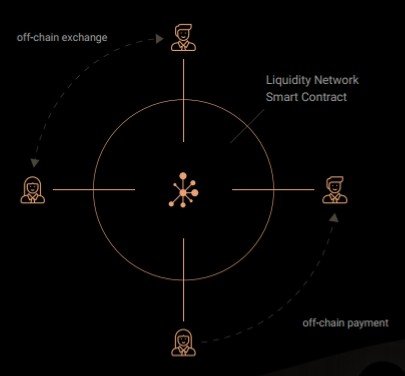
Off-chain transactions is separated into two main categories. The 2-party transact and N-party transactions.
A 2-party payment hub is an extension of the above types, which includes more than just two people participating in a direct transfer of funds. The channels are as follow:
[i] Unidirectional
As the name implies, it is a transaction where funds are transferred in one direction. It is howeverl between two parties; one of which deposits collateral of some sort (e.g. ether). The deposit is a security that covers the total amount that will be transferred through the off-chain channel.
[ii] Bi-directional
In a bidirectional channel, both parties will have to deposit rhe collateral. This channel allows funds can then be sent in both directions. The risk with bidirectional off-chain transactions is that either of th nodes can be illegal or malicious and go on to invalidate the previous transaction and steal fund from other party.
[iii] Linked payments
Linked payment channels are used in the case where two peers are not directly connected. Every member deposits some collateral in this network. With linked payments topography, the following considerations are taken into account: route finding, channel maintenance, transaction security, and congestion balancing.
Security Matters on Liquidity
There are two kinds of users on Liquidity on the basis of integrity. They are the Honest User and the Adversary.
An adversary is a malicious user. He may be in a lease role and may cause others under his control to attack an honest user. The honest user is the one who always tries to protect himself from losing any of his committed fund.
Liquidity network wants to ensure that honest participants do not lose any of their funds. In order to achieve this , Liquidity network will employ some measures:
[i] Balance Conservation: Here, a calculated set of transaction for rebalancing is sent by the leader to all participants on the hub. The honest party can then evaluate these transactions
Product and Market
mobile application
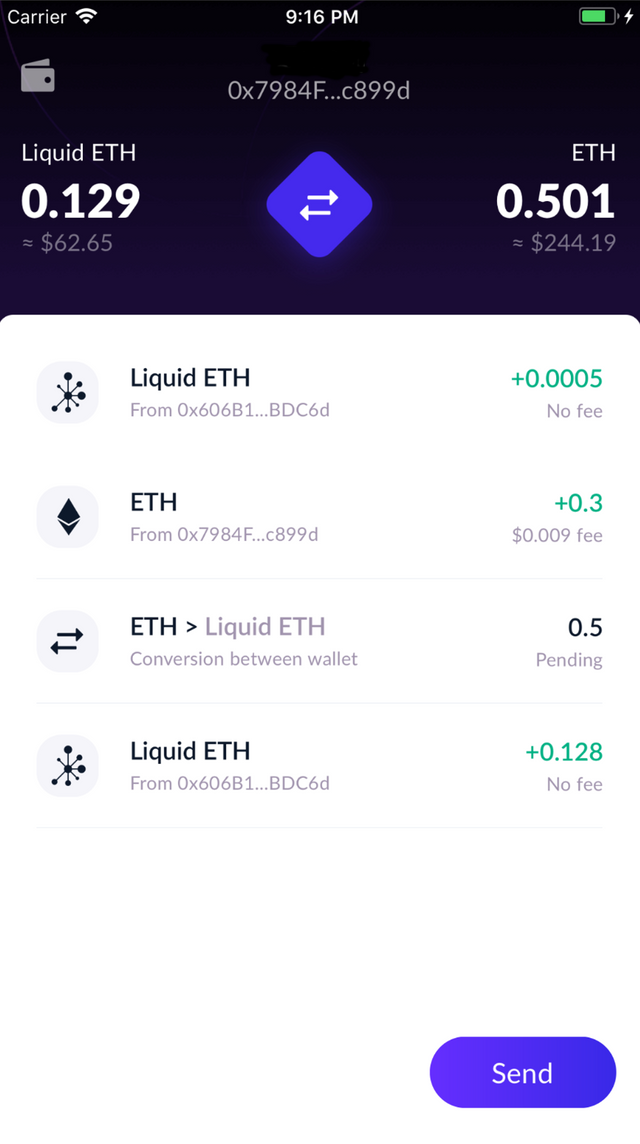
The application is for both desktop and mobile users(iOS and Android)
Liquidity vs other payment solution
Liquidity vs other offchain solution
Liquidity vs other exchanges
this contest was organised by @originalworks. For further information check here
if you want to know more check some of these links below


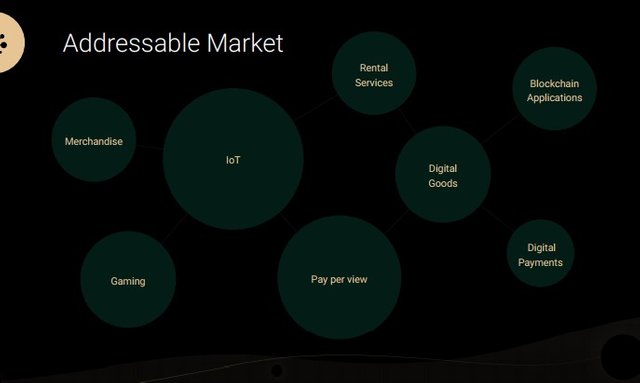
.png)
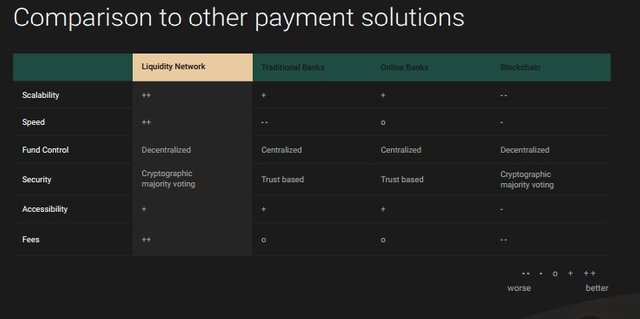
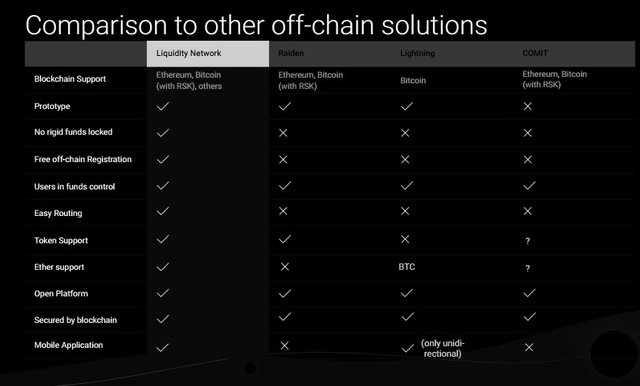
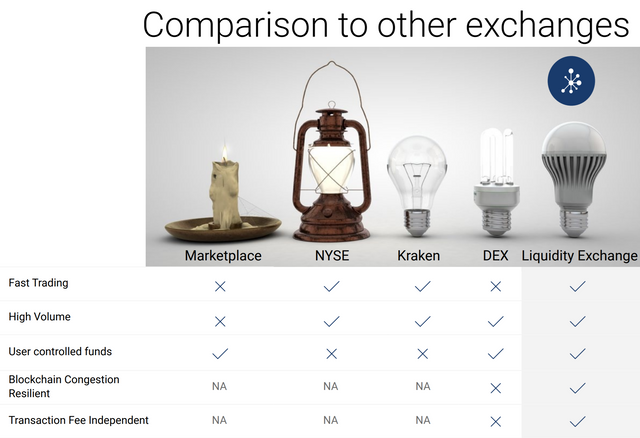

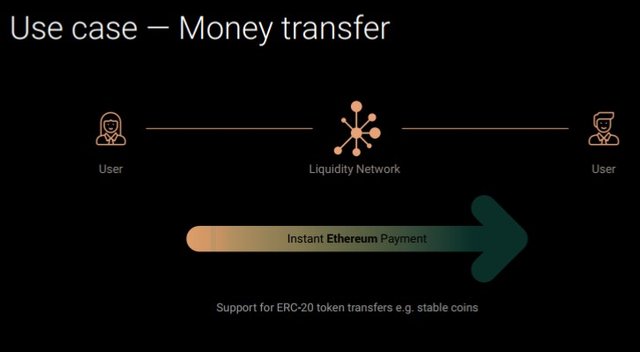
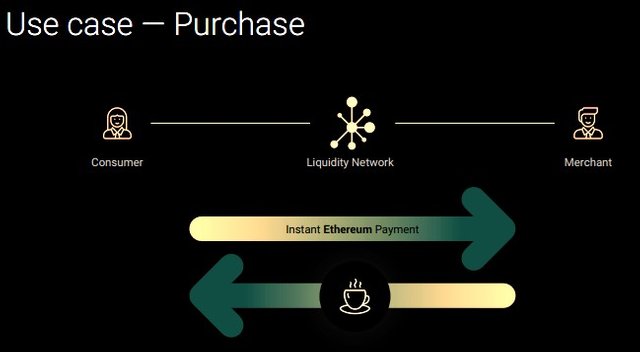
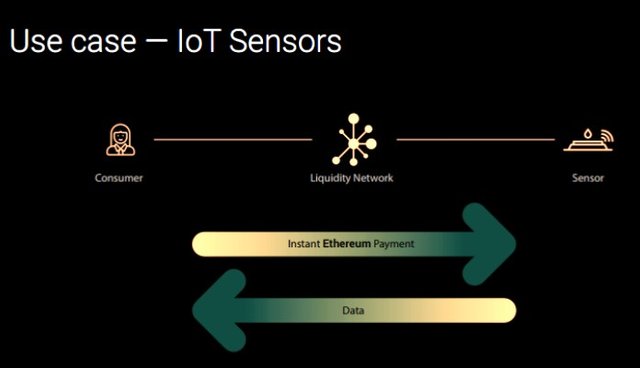
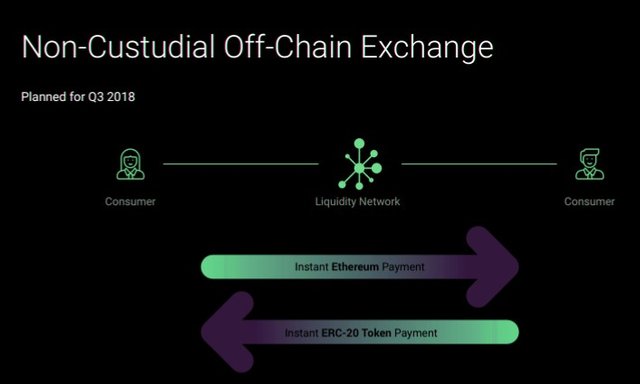
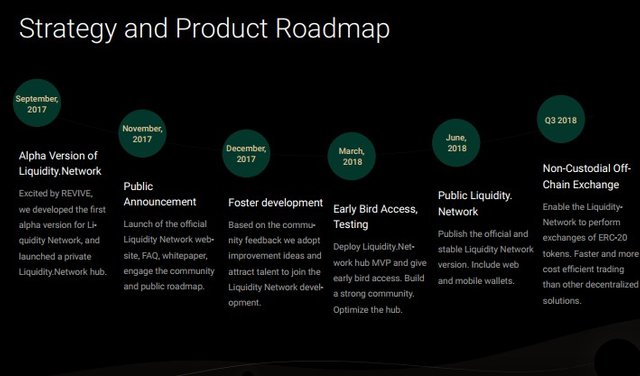
Hello! I find your post valuable for the wafrica community! Thanks for the great post! We encourage and support quality contents and projects from the West African region.
Do you have a suggestion, concern or want to appear as a guest author on WAfrica, join our discord server and discuss with a member of our curation team.
Don't forget to join us every Sunday by 20:30GMT for our Sunday WAFRO party on our discord channel. Thank you.